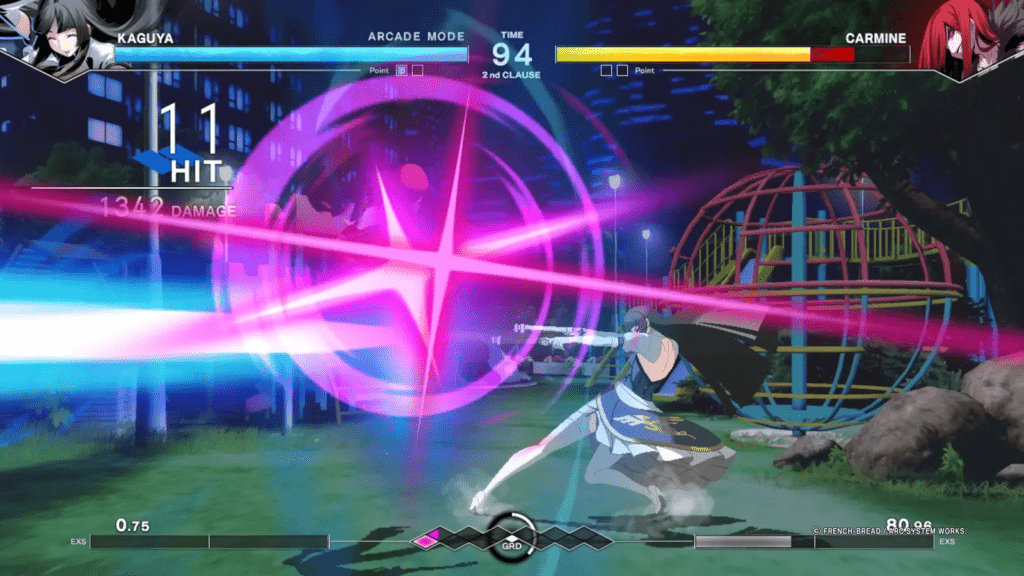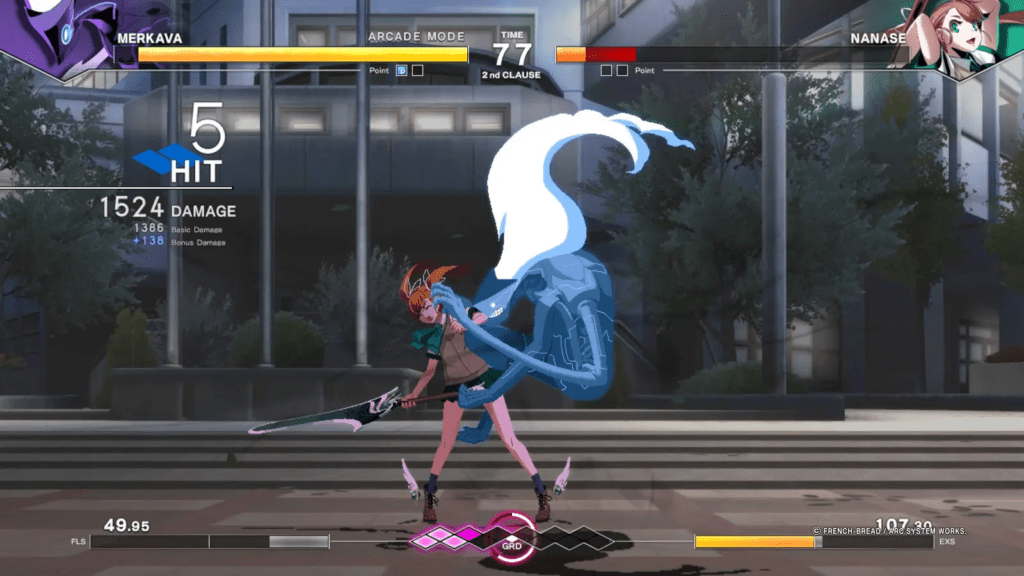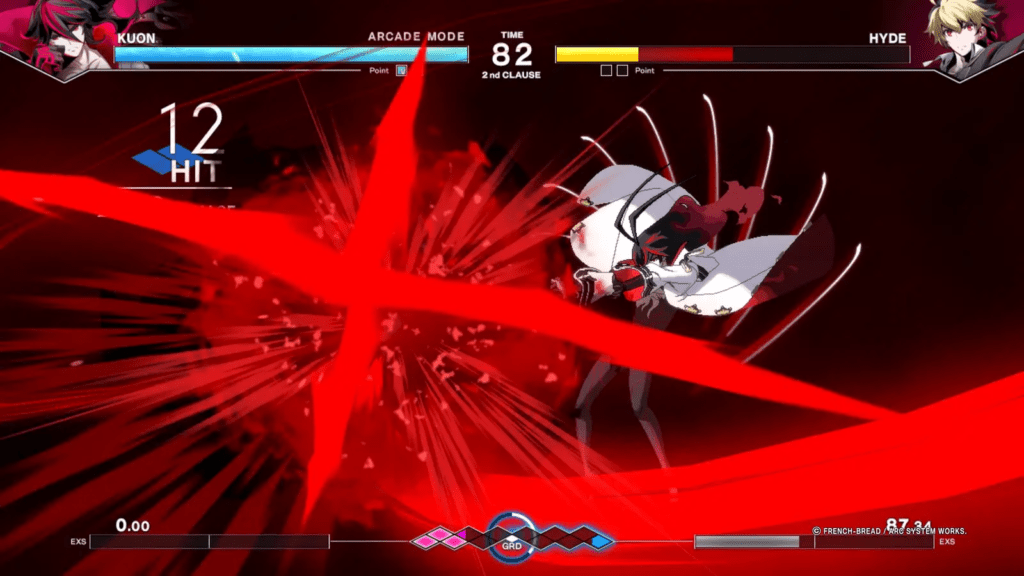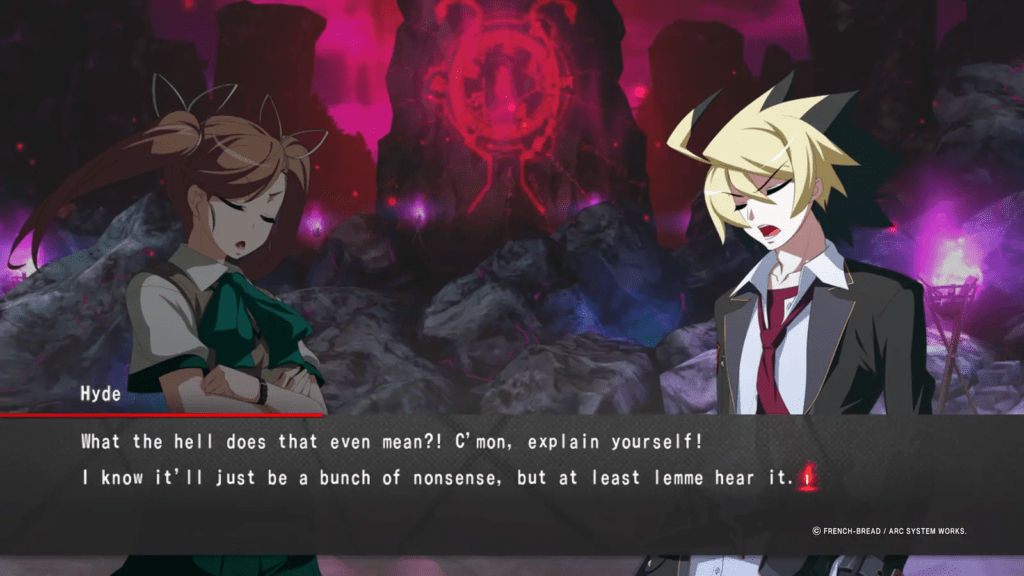
Initial release date: January 22, 2024
Platforms: PlayStation 5, Nintendo Switch, PlayStation 4, Microsoft Windows
Genres: Fighting game, Action game
Developers: French-Bread, Arc System Works
Publishers: Arc System Works, Limited Run Games, Clear River Games
Series: Under Night In-Birth
Fighting games frequently deal with issues that are essential to their existence’s justification. They must strike a balance between keeping the die-hard fans interested and adding complexity in order to attract new players. Sequels and revisions should be made to shake things up without alienating fans of the previous version who invested a lot of effort in mastering the game. Every time, Under Night In-Birth manages to make it seem simple. Its solid fundamental architecture, which is easy to understand and gratifying to explore, allows it to easily overcome the challenges this genre encounters. Since then, that core has undergone several updates; the most significant of them are represented by Under Night In-Birth II [Sys:Celes], which does not significantly deviate from any series standards. Rather than that, Under Night In-Birth II just makes the series’ signature effortlessness even more potent.
As soon as you start pressing buttons, the fighting mechanism of UNI becomes intuitive. Most players will be able to quickly figure out combos that work for them, even if they’re not the best, thanks to its rather free-flowing combo system, which allows a lot of moves to readily flow into one another. It’s common to underestimate the power of merely pressing buttons. When something feels good, it’s even better when it aids in players’ intuitive understanding of the game. This kind of open combo system allows even beginners to try out the various tools available to each character.
Most people’s moveset is expanded with additional skills in this sequel. You would think that this would make their playstyles more complicated, but in general, I felt that these additions clarified things more than they confused. While some characters receive tools to assist them address areas in which they struggle, most characters focus on their strengths. For instance, Merkava, a large creature with a penchant for irregular mobility, has always been my favorite character in these games. His ability to soar in the air combined with his flexible limbs allows him to swiftly cover the screen. UNI2 equips him with a brand-new ground pound that, when charged, launches him skyward, allowing you to score an aerial combo when it connects or engage in some aerial maneuvers when it doesn’t.

In a similar vein, UNI2 builds upon the advantages of its fundamental systems. It introduces two new mechanics: the “Celestial” state and the “Creeping Edge.” These two mechanics have a significant impact on UNI2 match tempo, which is mostly determined by the GRD system in place.
GRD is the heart and spirit of UNI. A GRD gauge appears at the bottom of the screen, serving as a simplified visual representation of the battle. The meter fills up as you play the game advantageously, which includes anything from landing attacks to blocking. The same applies for your opponent; this is where things get interesting. UNI rewards the player who fills their GRD gauge the fastest with bonuses such as the ability to convert portion of their gauge into special actions or even unlock a unique state known as “Vorpal” that strengthens their character. This method not only converts the pacing of a fighting game match into an easy shorthand, but it also incentivizes players to play the game correctly in order to receive additional advantages.
Celestial state takes the “Vorpal” notion one step further. Normally, you merely need to have more GRD blocks filled than your opponent when a periodic countdown expires to reach Vorpal. If you have six or more blocks filled, which is equivalent to completely overpowering your opponent, you will enter the Celestial state. This powerup increases your damage and provides you 12 GRD blocks to work with, converting you into a really terrifying creature.
In my opinion, anyone who enters the Celestial condition serves as an unofficial round-ender. When facing someone who has gone Celestial, a player’s odds of survival are almost zero. Is it a little overkill? Probably. That’s presumably the point. This concept appears to exist less for the mechanism and more to highlight the relevance of the GRD system. I have not seen a single match against an actual person in which someone gained Celestial; it only appeared in bouts with the AI. You must be extremely lax to allow this to happen, and as a result, it will be an uncommon event. It’s a distinctive and dramatic deterrent to sloppy play, similar to the “dizzy” state in games like Street Fighter.

You’ll probably see the Creeping Edge mechanic more often. This dash technique allows you to avoid opposing assaults and quickly close the gap or potentially escape corner pressure. Offensive pressure can be somewhat overpowering in the world of UNI, so I enjoy the additional option. It’s a valuable instrument, but throwing it away carelessly can result in serious consequences. I found myself using it sparingly, so while it will appear more frequently than Celestial State, it will remain infrequent.
Neither of these mechanics really alters UNI as a game; they simply improve what is already there. While the II in the title may have set expectations for a larger revamp, I don’t believe it contributes to what makes these games great. UNI provides a well-thought-out battle system that is both simple and detailed. This game has been meticulously developed and updated over the last decade, much like an artist would touch up his masterpiece painting. The results of that labor are on full display in UNI2. If I had to choose between being different for the sake of it and making a series of carefully studied tweaks, I’d go with the latter when the core notion is as solid as it is at UNI.
On a larger scale, the new characters will do much to shake up the game on their own. I’ll be honest: none of the new characters can take Merkava’s place in my heart, but they’re still entertaining. Kaguya ended up being my favorite of the newcomers; she’s a gunslinger who uses her rifles as long-range pokes before swooping into her opponent’s face with some complex combos. I always enjoy characters who allow me to keep the opponent at a frustrating distance, and Kaguya fits the bill nicely.

Every returning character’s theme tune is also noticeably updated in UNI2. UNI already had a terrific soundtrack, and, like the fight mechanics, most of these remixes only enhance to what makes the original melodies great rather than completely rework them. It may sound strange, but the new songs played a significant role in making this entry feel like a legitimate continuation of the series. You can’t beat the character growth that only new theme tunes can offer!
If nothing else, UNI2 continues the story from the original game. It’s been ten years, so it’s about time! The UNI world has entertaining characters, so even if the story isn’t a big issue, I was glad to see how each character’s journey finishes in their Arcade Mode path. However, UNI2 implies that it isn’t willing to totally shut the book on this series.
Aside from that, UNI2 provides a fairly normal set of options to play around with. Modes such as Score Attack, Time Attack, and Combo Missions will keep you entertained, but the online modes will undoubtedly be the primary appeal. UNI2 uses the rollback netcode system, and each match I played was a significant improvement over my memory of playing the first game on my PS3 WiFi. I apologize to everyone I played with back then.
When the basic game is as good as it is at UNI, you don’t always need anything special to keep players coming back. This latest incarnation of the series packs just as much punch as ever, especially given all of the new material and advancements over its predecessors. This is certainly the finest addition in the series to date, and one of the best fighting games available today. If you’re willing to try something different than Street Fighting, Under Night may be the finest option for learning and enjoying fighting games.

Review Overview
Gameplay – 85%
Controls – 80%
Aesthetics – 90%
Content – 78%
Accessibility – 82%
Value – 85%
Overall Rating – 83%
VERY GOOD!
Summary: Under Night In-Birth II [Sys] builds upon its predecessor with refined mechanics and a deeper storyline, making it a standout in the 2D fighting game genre. The gameplay remains fast-paced and technical, with a range of characters that offer diverse playstyles and strategies. The visuals are sharp and stylish, enhancing the overall fighting experience. While the game maintains its core strengths, some players might find the complexity of new systems and mechanics a bit daunting. Overall, it’s a well-crafted sequel that caters to both long-time fans and newcomers, offering a satisfying and challenging fighting experience.

